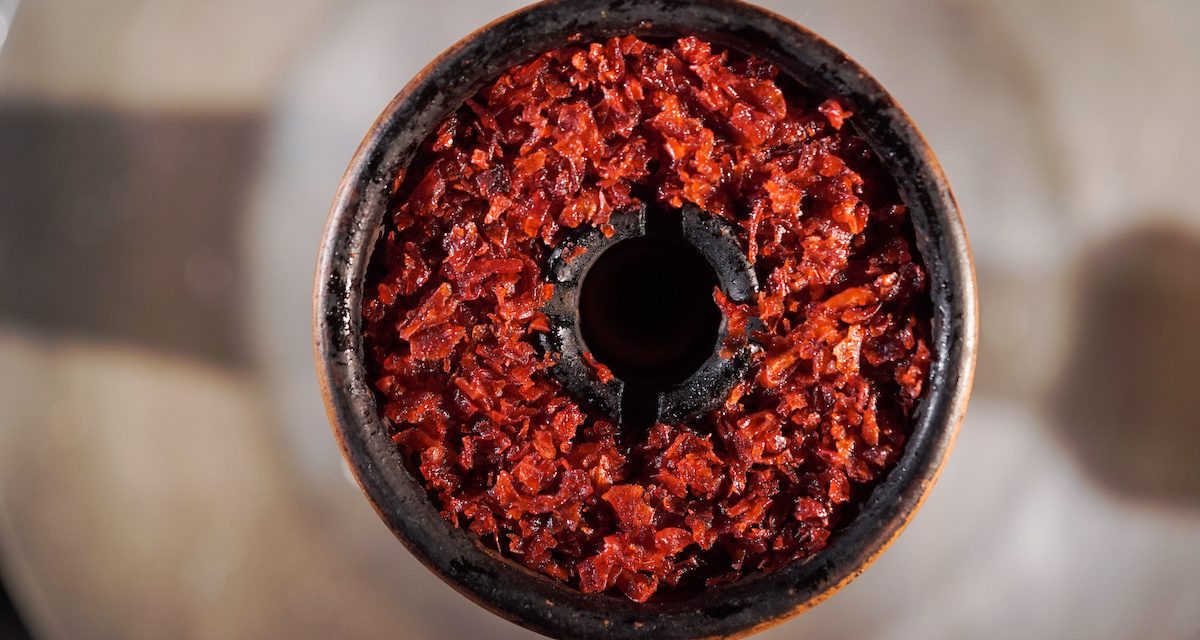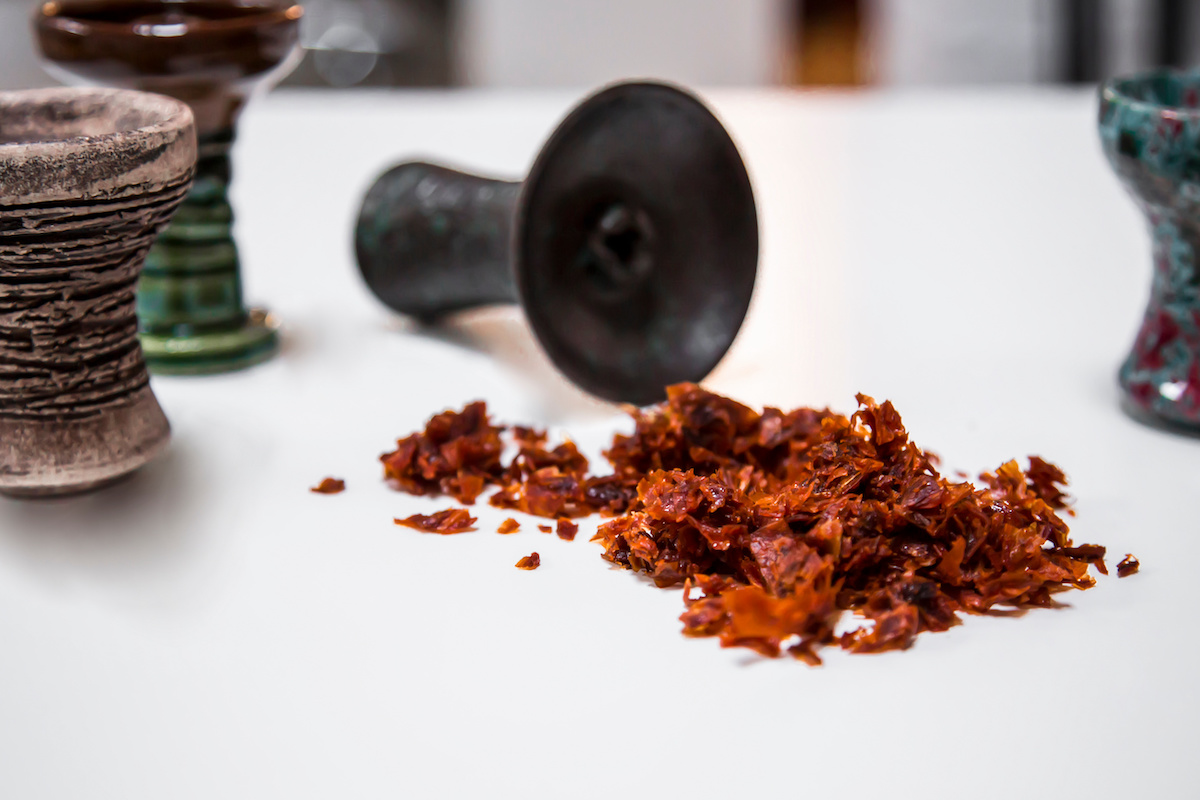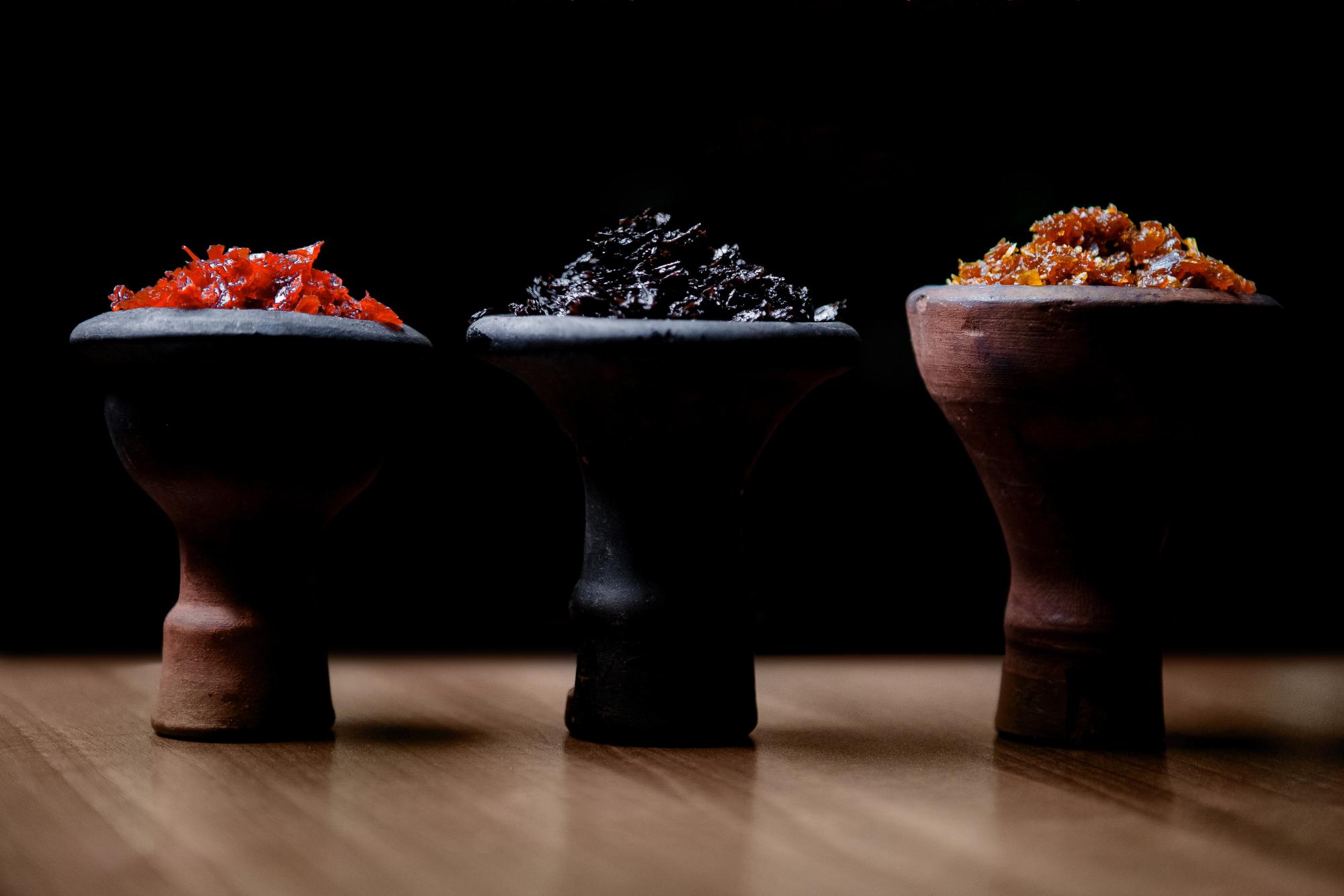Shisha, also known as hookah or water pipe, has gained significant popularity in recent years. Originating from the Middle East, this centuries-old tradition has now spread across the globe, captivating people with its unique flavors and social appeal. However, while many may be familiar with the concept of shisha, there is still much to learn about its ingredients, usage, cultural significance, and potential health risks. In this blog post, we will delve into the world of shisha, exploring its origins, composition, proper usage techniques, cultural significance, and the controversies surrounding its health implications. Whether you are a shisha enthusiast or simply curious about this ancient practice, join us as we unravel the mysteries of shisha and gain a deeper understanding of this beloved pastime.
Understanding the Basics: What Shisha is and its Origin
Shisha, also referred to as hookah or water pipe, is a traditional method of smoking flavored tobacco. Originating in the Middle East, it has a rich history that dates back several centuries. Shisha smoking involves the use of a water pipe, which consists of a base filled with water, a vertical pipe, and a bowl on top. The bowl is packed with specially-prepared tobacco, typically mixed with molasses and various flavors, which is then heated using charcoal. The smoke generated passes through the water in the base, creating a smooth and flavored inhalation experience.
The practice of smoking shisha is deeply rooted in Middle Eastern culture and has been an integral part of social gatherings, ceremonies, and celebrations for centuries. It has transcended borders and gained popularity worldwide, with shisha lounges and cafes becoming common sights in many countries.
The origins of shisha can be traced back to India, where it is believed to have been invented in the 16th century. From there, it spread to the Middle East and other parts of the world through trade routes and cultural exchanges. Over time, different regions have developed their own unique variations and techniques of shisha smoking, resulting in a diverse range of flavors and customs associated with this ancient tradition.
In the next sections, we will explore the ingredients and composition of shisha, delve into how it is used, examine its cultural significance, and address the controversies and health risks associated with this popular pastime. By the end of this blog post, you will have a comprehensive understanding of shisha and be equipped with the knowledge to make informed decisions regarding its use.
Ingredients and Composition of Shisha
Shisha is composed of several key ingredients that contribute to its unique taste and smoking experience. Understanding the composition of shisha is crucial for individuals who want to explore different flavors, be mindful of their health, or even create their own blends. In this section, we will take a closer look at the main components of shisha, the varieties of flavors available, and the potential health implications associated with its ingredients.
Main Components of Shisha
- Tobacco: The primary ingredient in shisha is tobacco. However, it is important to note that shisha tobacco is different from the tobacco used in cigarettes. Shisha tobacco is often a combination of cured leaves, molasses, and glycerin. The leaves are typically air-cured and flavored with various additives to enhance the taste.
- Molasses: Molasses, a thick, syrupy substance derived from sugarcane or sugar beets, is added to shisha tobacco to provide moisture and help create thick smoke clouds. It also adds a touch of sweetness to the overall flavor profile.
- Glycerin: Glycerin, a colorless and odorless liquid, is another common ingredient in shisha. It helps to retain moisture, create a smoother smoking experience, and enhance the production of smoke.
- Flavorings: Shisha comes in a wide range of flavors, from fruity and sweet to herbal and minty. Flavorings, such as fruit extracts, essential oils, and artificial additives, are added to the tobacco mixture to create the desired taste. Popular flavors include apple, grape, mint, watermelon, and rose.
Varieties of Flavors
Shisha flavors are virtually limitless, catering to a wide range of preferences. Some popular categories include:
- Fruity Flavors: These flavors mimic the taste of various fruits, such as apple, orange, mango, and strawberry. They are often sweet and refreshing, providing a pleasant smoking experience.
- Minty Flavors: Mint flavors, such as spearmint and peppermint, provide a cooling sensation and a refreshing twist to the smoke. They are commonly used to mix with other flavors or enjoyed on their own.
- Herbal Flavors: Herbal shisha blends are made from a mixture of dried herbs, flowers, and fruit peels. They offer a natural and aromatic smoking experience and are often favored by those seeking a tobacco-free alternative.
- Exotic Flavors: Shisha manufacturers continually experiment with unique and exotic flavors, such as coconut, pineapple, pomegranate, and even dessert-inspired options like chocolate or vanilla.
Health Implications
While shisha smoking may seem enjoyable and harmless, it is important to be aware of the potential health risks associated with its ingredients. The combustion of shisha tobacco produces harmful chemicals, including tar, carbon monoxide, and heavy metals, which can be inhaled by the smoker. Additionally, the use of artificial flavorings and additives may have their own health implications, especially when used in large quantities or over an extended period.
In the next section, we will explore how shisha is used, including the role of the water pipe, setting up a shisha pipe, and proper techniques for smoking. Understanding the proper usage of shisha is essential for a safe and enjoyable experience.
How Shisha is Used
Shisha smoking involves a unique process and requires specific equipment for a proper smoking experience. In this section, we will explore the role of the water pipe, the process of setting up a shisha pipe, and the proper techniques for smoking shisha.
The Role of the Water Pipe in Shisha Smoking
The water pipe, also known as the hookah, plays a crucial role in shisha smoking. It consists of several components:
- Base: The base is a container filled with water. It acts as a filtration system, cooling down the smoke and removing some impurities.
- Stem: The stem is a long tube connected to the base. It extends upward and holds the bowl and the mouthpiece.
- Bowl: The bowl is where the shisha tobacco is placed and heated. It is usually made of ceramic or clay.
- Charcoal Tray: The charcoal tray is located above the bowl and holds the charcoal used for heating the tobacco.
- Hose and Mouthpiece: The hose is connected to the stem, allowing the smoke to be drawn through it. The mouthpiece is attached to the end of the hose and is used by each smoker.
Setting up a Shisha Pipe
To set up a shisha pipe, follow these steps:
- Fill the base with water: Fill the base with water until it covers about an inch of the stem. The water level should be enough to submerge the bottom end of the stem.
- Prepare the bowl: Take the bowl and fill it with shisha tobacco. Ensure it is packed loosely and not tightly pressed. Leave a small gap between the tobacco and the foil or heat management device.
- Foil or heat management device: If using foil, cover the bowl with it and poke several small holes in it to allow heat to pass through. Alternatively, if using a heat management device, place it on top of the bowl.
- Add charcoal: Light the charcoal using a lighter or a charcoal burner until it becomes red-hot. Place the charcoal on the foil or heat management device.
- Let it heat: Allow the tobacco to heat for a few minutes, allowing the flavors to develop and the smoke to form.
Proper Techniques for Smoking Shisha
To smoke shisha properly and enjoy the experience, follow these techniques:
- Drawing: Take slow, steady puffs from the mouthpiece of the hose, rather than inhaling deeply. The goal is to draw the smoke into your mouth, savoring the flavors, and exhaling gently.
- Rotation: Rotate the charcoal periodically to ensure even heat distribution and prevent the tobacco from burning. This helps maintain a consistent flavor throughout the smoking session.
- Heat management: Keep an eye on the heat of the charcoal. If the smoke becomes harsh or tastes burnt, reduce the heat by either removing a charcoal or placing a heat management device on top.
- Social etiquette: When smoking in a group, it is customary to share the hose with others. Pass the hose to the person next to you after taking a puff, ensuring everyone gets a chance to enjoy the shisha.
In the next section, we will explore the cultural significance of shisha, its roots in Middle Eastern culture, and its widespread popularity around the world.
Cultural Significance of Shisha
Shisha holds great cultural significance, particularly in the Middle East, where it has been an integral part of social gatherings and traditions for centuries. In this section, we will explore the role of shisha in Middle Eastern culture, its global spread, and its presence in social gatherings and celebrations.
Shisha in Middle Eastern Culture
- Historical Roots: Shisha has deep historical roots in the Middle East, where it has been enjoyed for centuries. It is deeply ingrained in the social fabric of many Middle Eastern countries, including Egypt, Turkey, Lebanon, and the United Arab Emirates.
- Social Bonding: Shisha smoking is often seen as a social activity, providing an opportunity for friends, family, and colleagues to gather and bond. It is common to find shisha cafes and lounges bustling with people engaging in conversations, playing games, and sharing stories while enjoying the flavors of shisha.
- Traditional Settings: Shisha is often associated with traditional settings, such as old bazaars, coffee shops, or outdoor gatherings. These settings create an ambiance that reflects the rich cultural heritage of the region.
Global Spread and Popularity
- Shisha Beyond the Middle East: Over time, shisha has transcended cultural boundaries and gained popularity worldwide. It can now be found in various countries across different continents. Shisha lounges, cafes, and bars have become common meeting places for people to relax and socialize.
- Western Influence: The spread of shisha beyond the Middle East can be attributed, in part, to the influence of Western culture. Shisha’s appeal lies in its exotic flavors, social nature, and the unique experience it offers, which has attracted people from diverse backgrounds.
Shisha in Social Gatherings and Celebrations
- Festive Atmosphere: Shisha often takes center stage in social gatherings and celebrations, adding an element of festivity and enjoyment. It is commonly seen at weddings, birthdays, and special events, where it becomes a focal point for relaxation, conversation, and celebration.
- Ceremonial Significance: In some cultures, shisha holds ceremonial significance. It may be used in rituals or acts as a symbol of hospitality and generosity when offered to guests.
- Cultural Exchange: Shisha has become a platform for cultural exchange, where people from different backgrounds come together to share their experiences, stories, and traditions while enjoying the flavors of shisha.
In the next section, we will address the controversies and health risks associated with shisha. It is important to be aware of these factors to make informed decisions regarding its use.
Controversies and Health Risks of Shisha
While shisha smoking may have its allure, it is not without controversies and health risks. In this section, we will address some common misconceptions about shisha, delve into the health risks associated with its use, and explore the regulations and bans imposed on shisha in different regions.
Common Misconceptions about Shisha
- Harmless Alternative: One common misconception is that shisha smoking is a harmless alternative to cigarette smoking. However, the truth is that shisha smoke contains many of the same harmful chemicals found in cigarette smoke, including nicotine, tar, carbon monoxide, and heavy metals.
- Filtered by Water: Another misconception is that the water in the shisha pipe filters out the harmful substances in the smoke. While it may cool down the smoke and make it feel smoother, it does not eliminate the health risks associated with shisha smoking.
Health Risks and Medical Studies
- Respiratory Issues: Prolonged and frequent shisha smoking has been linked to various respiratory problems, including chronic bronchitis, asthma, and lung cancer. The inhalation of harmful chemicals and toxins in the smoke can have serious long-term consequences on respiratory health.
- Nicotine Addiction: Shisha tobacco contains nicotine, which is highly addictive. Regular shisha smokers can develop a dependence on nicotine, leading to withdrawal symptoms when attempting to quit.
- Secondhand Smoke: Just like cigarette smoke, shisha smoke can be harmful to those exposed to it. Secondhand smoke from shisha sessions can pose health risks to nonsmokers, especially in enclosed spaces.
- Oral Health Issues: The prolonged exposure of the mouth and teeth to shisha smoke can lead to dental problems, including stained teeth, bad breath, and an increased risk of gum disease.
- Carbon Monoxide Poisoning: Shisha smoking involves the burning of charcoal, which releases carbon monoxide. Prolonged exposure to high levels of carbon monoxide can lead to poisoning, causing symptoms such as headaches, dizziness, and nausea.
Regulations and Bans
- Regional Bans: Many countries and local jurisdictions have implemented regulations and bans on shisha smoking. These restrictions vary from outright bans in public places to age restrictions and limitations on advertising.
- Health Warnings: In some regions where shisha smoking is allowed, health warnings are required on shisha packaging and in shisha establishments to inform users about the potential health risks associated with its use.
It is essential to consider these controversies and health risks when making decisions about shisha smoking. Being aware of the potential consequences can help individuals make informed choices regarding their health and well-being.
In conclusion, shisha is a centuries-old tradition that has captivated people worldwide with its flavors, social appeal, and cultural significance. Understanding the basics, ingredients, and proper usage of shisha is essential for a safe and enjoyable experience. However, it is crucial to be aware of the controversies, misconceptions, and health risks associated with shisha smoking. By being informed and responsible, individuals can make choices that prioritize their well-being while still appreciating the rich cultural heritage and social aspects that shisha brings.
Thanks for joining us for our latest article! At Inside Hookah, we strive ourselves on providing comprehensive, fact-based information that’s easy for hookah users of all skill levels to understand.
If you have any questions or comments, we’d love to hear about them. Feel free to contact us or drop us a message in the comments.
Looking for even more Inside Hookah Articles to check out? Explore the latest Hookah News and Hookah Reviews by the Inside Hookah Team!
Stay tuned for our next article and happy smoking!








